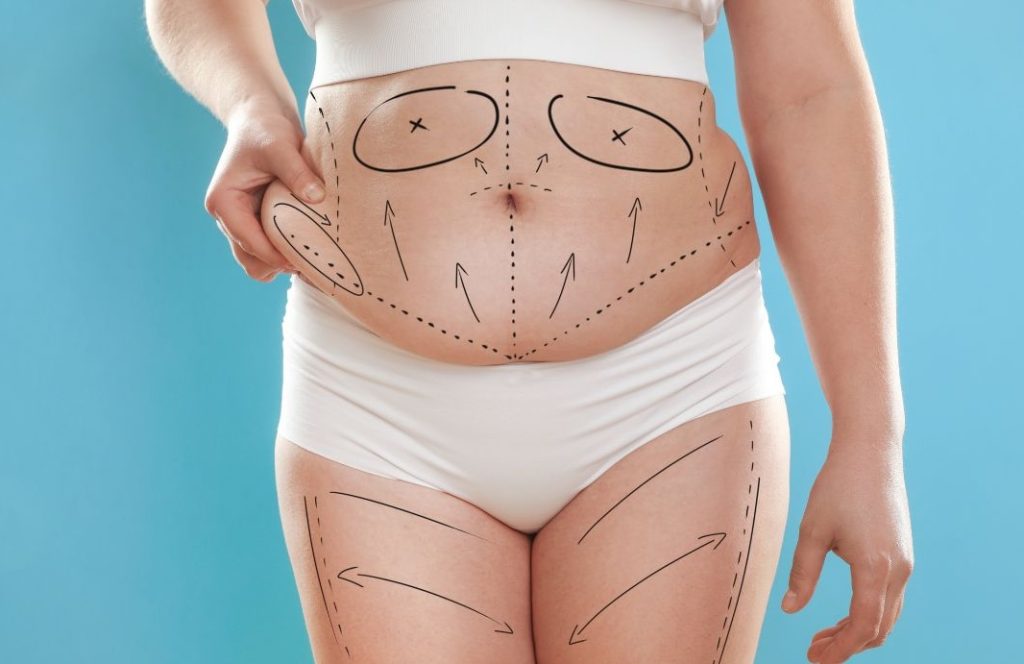Losing weight often brings major improvements to health and well-being. More energy, reduced strain on the body, and the sense of progress are all positives worth celebrating. Yet for many people, weight loss also comes with a change they might not expect — loose or excess skin.
This is a natural result of the skin stretching and then not always returning fully to its previous shape. How noticeable it is varies from person to person, depending on factors like age, genetics, and how much weight has been lost.
Although it can feel frustrating, loose skin is common and nothing to be ashamed of. For those adjusting after weight loss, there are ways to support skin health and appearance. Some are simple lifestyle steps, while others involve professional input.
Here we explore supportive approaches to help you understand your options and feel more confident in your body.
Strength Training to Build Muscle

Adding lean muscle is one of the most practical ways to influence how the body looks after weight loss. Strength training — whether that’s using weights, resistance bands, or bodyweight exercises — helps fill out areas where fat has been lost, creating a firmer overall appearance. While it does not “tighten” skin directly, building muscle underneath can make loose areas less noticeable.
A routine of regular resistance activity can also improve posture, stability, and general body confidence. It does not need to be extreme or overly technical. Squats, lunges, push-ups, or light dumbbell movements can all contribute to muscle tone. People who are new to this type of exercise may find it helpful to start slowly and progress gradually, possibly with guidance from a qualified trainer.
The key is consistency. Over time, strength training often makes a visible difference in how skin sits on the body after weight loss.
Staying Hydrated and Nourished
The skin is the body’s largest organ, and like any organ, it depends on adequate hydration and nourishment to function well. Drinking enough water each day helps maintain elasticity and may support the skin’s ability to adapt after weight loss. While hydration alone will not prevent or remove loose skin, it is part of the foundation for healthy skin.
Nutrition also plays a role.
A varied diet rich in fruits, vegetables, lean proteins, and healthy fats provides the building blocks for collagen and elastin — the proteins that keep skin supple. Vitamin C, zinc, and omega-3 fatty acids are often highlighted for their contribution to skin health, though they are best obtained through whole foods rather than supplements. Restrictive dieting can actually reduce skin quality, so a balanced approach works best.
Focusing on steady hydration and nutrient-rich meals is a simple but supportive way to care for your skin post-weight loss.
Using Firming Creams and Lotions
Topical creams and lotions are sometimes used by people looking to improve the feel or appearance of their skin. While expectations need to stay realistic, products containing ingredients such as retinoids, hyaluronic acid, or collagen-supporting peptides may offer modest benefits.
At the very least, moisturisers keep the skin hydrated, which can improve its overall texture and comfort.
It is worth noting that creams cannot remove loose skin or replicate the effects of professional treatments. However, for those who want to include them as part of their daily routine, they may provide a small boost in confidence and skin comfort. Because individual responses vary, it often comes down to personal preference. Some people notice softer, more supple skin, while others find the difference subtle.
The most important point is that while creams may help, they are best thought of as one piece of a broader self-care strategy.
Considering Non-Surgical Skin Treatments
In recent years, a range of non-surgical aesthetic treatments have become available in clinics. These include radiofrequency therapy, ultrasound treatments, and certain types of laser procedures. Their aim is usually to stimulate collagen production in the skin, which may improve firmness over time.
For people with mild to moderate skin laxity, these options can sometimes offer noticeable results. However, they are not one-size-fits-all, and outcomes vary depending on the individual. It is important to remember that such treatments should only be carried out by qualified professionals with proper training and accreditation. They are not a substitute for healthy lifestyle habits, and they are not appropriate for everyone.
Anyone considering non-surgical skin treatments should discuss them with a certified practitioner, ask about realistic outcomes, and understand potential costs and risks.
Exploring these options is a personal choice, but professional guidance is essential to ensure safety and informed decision-making.
Exploring Surgical Options

For those with significant excess skin after major weight loss, surgical procedures may be considered. These can include body contouring surgeries such as abdominoplasty (tummy tuck) or arm and thigh lifts. Surgery can remove larger folds of skin that may not respond to other approaches.
However, it is vital to recognise that these are major operations requiring recovery time and carrying risks, as with any surgery. They should never be undertaken lightly or without medical referral. Anyone thinking about this path should first speak with their GP and then seek advice from a board-certified plastic or reconstructive surgeon. The British Association of Plastic, Reconstructive and Aesthetic Surgeons (BAPRAS) provides useful guidance for those exploring their options.
Surgery may be appropriate for some, but it is not suitable for everyone. Careful assessment, clear discussion of potential outcomes, and consideration of long-term implications are all part of making an informed decision.
Maintaining a Stable Weight
Loose skin can be influenced not only by past weight loss but also by fluctuations afterwards. Gaining and losing weight repeatedly — sometimes called yo-yo dieting — can stretch the skin further and make laxity more noticeable. That is why maintaining a stable, healthy weight is often recommended as a way to support skin and overall well-being.
This does not mean pursuing strict diets or unsustainable routines. Instead, the focus is on balanced eating, regular activity, and habits that can be maintained long term. Even small, consistent steps — such as daily walks, home cooking, or mindful portion sizes — contribute to stability. By maintaining weight, the skin is given the best chance to adjust gradually rather than being pulled in different directions.
Consistency also helps preserve muscle tone and supports body confidence, which often matters as much as the physical appearance of skin itself.
Being Patient with the Process
One of the most overlooked parts of dealing with loose skin is simply time. After weight loss, the skin may continue to adapt for months or even years. Younger people or those with smaller amounts of weight loss may notice quicker changes, while for others, the process is slower. Either way, patience is essential.
Embracing body positivity during this stage can make a big difference. Instead of focusing only on loose skin, it helps to remember the health gains achieved and the progress already made. Some people find support groups or online communities encouraging, as they normalise these experiences and provide perspective.
Accepting that skin changes are part of the journey — and that improvement can take time — allows people to feel more at ease in their own bodies while adjustments take place.
Loose skin after weight loss is common and completely normal. While it may feel frustrating, there are supportive ways to manage it, ranging from building muscle and staying hydrated to considering professional options if appropriate. The best approach depends on the individual, their goals, and their circumstances.
If you are thinking about aesthetic treatments or surgery, it is important to seek advice from qualified professionals rather than trying to decide alone. Speaking with your GP can be a helpful first step.
At WePrescribe, we believe in safe, expert-led support that looks at your health as a whole, so contact us today to learn how we can help you make informed choices with confidence and set you on the right path with the right guidance.


